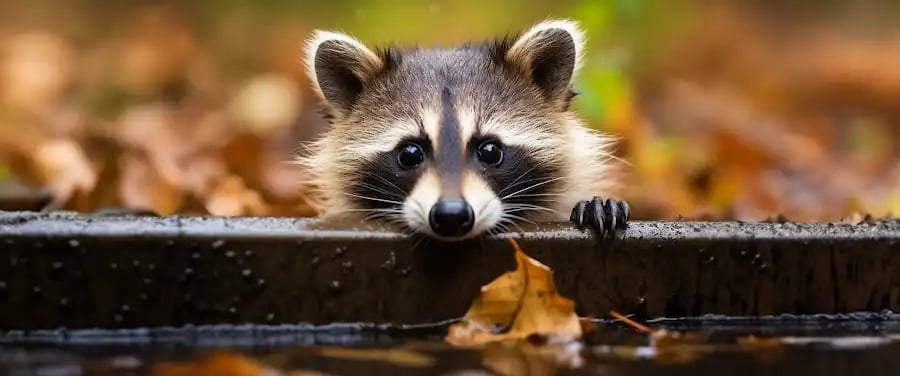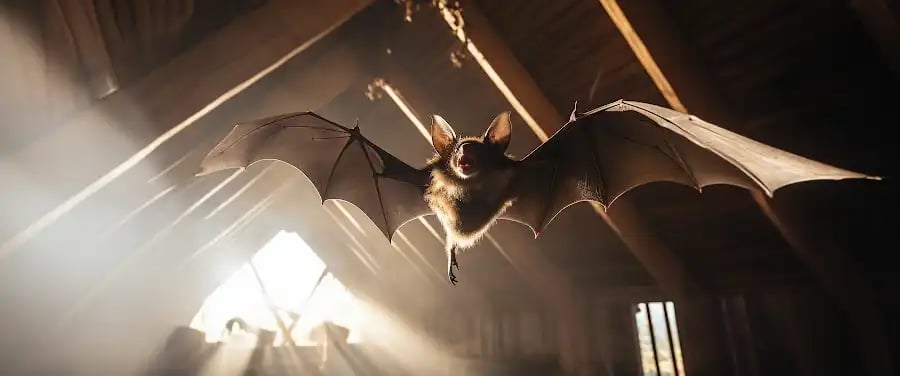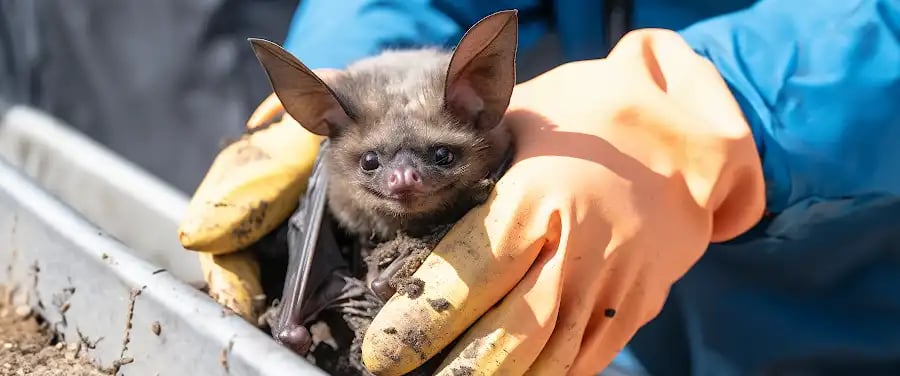
Welcome, friends, to the wonderful world of one of the most charming, intelligent, and notorious creatures that roam our backyards during the night – the raccoon. A bit mischievous, utterly playful, and armed with an insatiable curiosity, these critters, adorned in their signature “bandit’s mask”, are a fascinating spectacle of the wildlife right at our doorsteps. But, how much do we actually know about them? Let’s delve deeper and uncover the secrets of these familiar yet mysterious creatures that were once native only to North America but are now seen scampering around neighbourhoods across the globe.
It’s essential to discover more about our stripe-tailed buddies because our paths often intersect. They’re known to wreak havoc on trash cans, pet food supplies, and gardens, yet their character and vitality bring a charming texture to our urban and suburban landscapes. Knowledge of raccoons is not merely about finding ways to deal with them, but to also appreciate their instinctive cleverness, adaptability, and wholly unique nature. From their nocturnal quests, clever problem-solving skills, to their diverse diet – there are tons of interesting facts about raccoons we’ll be exploring in this article.
As we embark on this journey of understanding raccoons, we’ll venture into origins, behaviours, traits, ecological contributions, and yes, those infamous night-time antics! Our exploration will open our eyes to the true nature of these fascinating creatures, revealing a world that stretches far beyond what meets the eye. Who knows? By the time we’re done, we might even view our cheeky, nocturnal visitors in a whole new light! So hang on tight, you’re in for an exciting ride into the realm of the resourceful raccoon. The “introduction” to their world promises to be nothing less than unseen, peculiarly captivating, and packed with wildlife secrets. Now, sit back and join us as we start with addressing the most basic question – “What is a Raccoon and Where Do They Come From?” Trust us, the answer is much more fascinating than you’d think!
Physical Characteristics of Raccoons

Whether an avid animal lover or not, everyone has definitely wondered about the appearance of the iconic raccoon. With the body of an oversized cat and the coloring of a bandit, they’re impossible not to recognize. These critters showcase a mostly gray coat filled with dense underfur, which insulates against cold weather. The most distinctive feature of raccoons is the epic “masks” adorning their faces. Yes, like superheroes wearing masks!
The average length of mature raccoons, or Procyon lotor as they’re scientifically known, ranges from 40 to 70 cm (15.7 to 27.5 inches) not considering the bushy tails, which could be as long as 40 cm. Later on in the article, we will delve into a wider range of raccoon subspecies.
Speaking of male vs female raccoons, unlike many animal species, the gender difference isn’t quite visible. Both sexes share a similar look, though males tend to be slightly larger than their lady counterparts. Regardless, it proves a challenge for the untrained eye to tell them apart based on appearance alone.
Ever wonder how baby raccoons, or kits, behave and look? Well, brace yourself for cuteness overload! Born blind and deaf, they depend completely on their mothers for survival. Come 20 days, their distinctive masks start to materialize, and by three weeks, they start exploring the world beyond their den.
Raccoon Variations: Are There Different Types of Raccoons?
Good news is, yes, there are. Raccoons have a diverse family which spans across North and Central America, with most subspecies residing in the US. Apart from the common raccoon that we’re familiar with, there’s the tropical Tres Marias raccoon, the mangrove-loving Crab-eater, and the pygmy-sized Cozumel raccoon, among others.
Although these raccoon subspecies share general similarities, each has its own unique set of traits. For instance, the isolated Cozumel raccoon is noticeably smaller than its mainland relatives, perfect for its island habitats.
Through the miracles of evolution, some raccoons have adaptations uniquely suited to their environment. The Crab-eating raccoon, as its name suggests, is a pro at cracking open crustaceans with its long dexterous fingers. Talk about finding the tools you need.
This broad spectrum of varying adaptations and environments results in a rich diversity among different kinds of raccoons. Unravel more interesting raccoon facts, as we venture next into the Lifestyle and Behaviors of Raccoons.
Lifestyle and Behaviors of Raccoons

Procyon lotor, better known as raccoons, are fantastically enigmatic creatures. Let’s embark on an exciting journey together as we unravel the undercover world of these creatures. We will uncover secrets about their social structures, explore their unique mating behaviors, and delve into the lifespan differences when living in the wild versus captivity. Our journey will also take us deep into the world of raccoon communication, bringing to light their unique sounds, gestures, and markings.
Are Raccoons Solitary or Social Animals?
Before we dive into the world of these intriguing mammals, let’s put a common myth to rest. Many believe that raccoons are largely solitary creatures. However, that’s only partly true. While it is true that raccoons are often seen alone, it’s not a reflection of their social tendencies but rather their territorial behaviors.
Raccoons establish distinct territories, typically with a radius of one to three kilometers. Distinct markings often delineate these territories. However, they are known to form social groups called “gazes” under certain circumstances, such as a shared food resource. Interestingly, female raccoons tend to be more social than males, often forming kinship groups to rear their young collectively.
While raccoons primarily hint at solitary living, their social interactions are far more complex.
Those furry, bandit-faced creatures that use their tactile skills to navigate and forage are both social and solo creatures at different times!
Raccoon communication is unique and captivating. From distinctive calls like the “whoo-ing” to the hissing and growling, these furry creatures have picked up on the art of communication to survive and thrive in their environment. Moreover, their gestures and markings are also part of their self-expression and communication.
According to National Geographic, these complex behaviors – including their territoriality, group behaviors, and communication – have made raccoons masters of adaptation, enabling them to live in disparate environments, from mountains to city neighborhoods.
In the wild, raccoons live an average of 2-3 years due to predators and road accidents. However, in captivity, these intriguing creatures can live up to 20 years!
As we explore more about raccoons, our next stop will take us deep into their nutrition-hunting strategies and their unique feeding habits in the segment – “Raccoon Diet and Feeding Patterns”. Stay tuned, we’ve just scratched the surface!
Raccoon Diet and Feeding Patterns

Bedecked in nature’s most successful burglar’s mask, raccoons have both intrigued and amazed us with their adaptability, intelligence, and feeding habits. Unlike other wildlife, raccoons display an impressive degree of adaptability, especially when it comes to their diet.
In the wild, Raccoon diet is predominantly composed of plant-based food, berries, insects, and small vertebrates. However, their feeding habits dramatically change in an urban setting. Adapting skillfully to the overflow of human resources, raccoons feast on anything from your garbage to any pet food left unattended.
Raccoons are pretty clever when it comes to mealtime. They hunt and forage for food and are instinctively led to places harboring abundant resources like fruit trees, rich plant-life, and even, sadly, our trash cans. Contrary to popular belief, raccoons don’t actually store their food. These ingenious critters are masters of surplus budgeting – they eat as much as they can during times of plenty and carry enough body fat to sustain them during winter or any such food scarcity.
Omnivorous Nature of Raccoons
Now that’s just one facet of a raccoon’s dietary show. Their truly fascinating feature is their nature as omnivores. Raccoons are not shy about their wide-ranging palate, which includes anything from juicy fruits and nuts to insects, eggs, and small animals. This culinary expansiveness places them beside other North American omnivores, such as bears and skunks.
However, the raccoon does not stagnate in its diet; it alters its intake with the changing seasons. During spring, raccoons often dine on insects and their larvae, while in fall, they gorge on acorns, nuts, and corn found abundantly in the wild. This seasonal shift in feeding habits is an essential survival tactic for these resourceful creatures.
As we unveil the wildlife secrets of raccoons, we realize that these masked critters are no ordinary creatures. They are adaptable, intelligent, and most importantly, remarkable survivors. Adaptability to their environment, especially their diverse diet, is a testament to their supreme survival skills. If you wish to delve further into raccoon feeding habits, check out National Geographic’s feature on raccoons.
Understanding the complexity of a raccoon’s diet and feeding habits not only enhances our appreciation of these agile creatures but sets the stage for our subsequent topic: the intriguing “Classification and Science Behind Raccoons“.
Classification and Science Behind Raccoons

Greetings, fellow wildlife enthusiasts! Have you ever wondered about the puzzle of raccoon evolution and their scientific classification? If yes, you’re in luck today! Let’s demystify the secrets behind these nocturnal creatures’ background and dig into the scientific realm that awaits us.
Raccoons, scientifically known as Procyon lotor, belong to the family Procyonidae, rooted in the order Carnivora. Yes! They are carnivorous by nature, but rest assured, your trash can is all they’re after. Their name, having Greek origin, interestingly means “before the dog.” An allusion to their evolutionary link perhaps?
Let’s delve into the evolution of these species, shall we? Fossil evidence suggests that raccoons existed about 25 million years ago, branching off from the caniform line — a lineage shared with dogs, bears, and pandas. Hence, yes! You heard it right; raccoons are long-lost cousins of your fluffy pet dog.
Their evolution has primarily been driven by geographical separations, leading to different subspecies forming. The six raccoon subspecies known today, including the familiar North American raccoon (Procyon lotor lotor) and the Crab-eating raccoon (Procyon cancrivorous), can be traced back to five waves of migrations, largely across North and Central America.
To simplify this, here’s a handy table:
| Subspecies | Region | Notable Features |
|---|---|---|
| Procyon lotor lotor | North America | Thick fur, rounded body |
| Procyon cancrivorous | Central and South America | Prefers coastal habitats, fond of crabs |
| Procyon lotor hernandezii | Mexico and Central America | Most endangered subspecies |
So next time you spot a raccoon, know that you’re looking at an animal with a lengthy evolutionary background, closely related to some of your favorite pets. These nocturnal foragers sure do have a tale longer than their ringed tails!
Understanding the scientific classification and evolution of raccoons not only enlightens us about their past but also provides insights about their adaptive traits and survival strategies. From adjusting to urban landscapes to surviving harsh winters, raccoons continue to evolve in this ever-changing world.
With this newfound knowledge, let’s transition our journey. How has human perception molded the image of raccoons? From being villains in folklore to endearing characters in popular culture, it’ll be a thrill to uncover. Stay tuned!
Raccoons in Human Perception and Popular Culture

The mysteries of the natural world are unveiled in unique ways when we delve into human perceptions and cultural significances related to wildlife. Take the raccoon, for instance. This rambunctious, nocturnal creature has borne several meanings as varied as the cultures that have observed it. An oft-depicted character in literature and media, the raccoon, with its bandit-like mask and agile hands, has taken on roles that humanize and mythologize it, making it a potent symbol in folklore and mythology.
In popular culture, raccoons have been featured in numerous books, movies, and even video games. One of the most notable portrayals is perhaps the quick-witted and technologically savvy Rocket Raccoon from Marvel’s Guardians of the Galaxy. Also, remember RJ from the animated movie Over the Hedge? These representations emphasize the raccoon’s ingenuity and dexterity. According to a Smithsonian Magazine article, these mischievous creatures can even unlace shoes, untwist screw caps, and open door latches!
Are Raccoons Considered Pests or Pets?
Raccoons elicit a range of responses, equally admired for their intelligence, and maligned for their destructive tendencies. Some people view them as pests due to their habit of scavenging trash, their potential to carry diseases like rabies, and their tendency to damage property. These concerns have motivated many to take preventative measures like securing trash can lids, removing potential food sources, and regularly checking homes for raccoon-friendly spaces.
Conversely, the animal’s playful nature and recognizable features have charmed others into considering them as pets. However, possessing a pet raccoon isn’t as simple as adopting a puppy. It involves navigating a labyrinth of legal regulations. Though keeping a raccoon as a pet is legal in some places, it requires a special permit in others. Furthermore, health and ethical considerations concerning rabies vaccination and the challenge of providing a proper lifestyle to these wild creatures should be taken into account.
Loving raccoons from a distance might be the most favorable option for everyone involved. That said, our fascination and understanding of these creatures extend beyond their roles as pests or pets. As they continue to adapt to their ever-changing surroundings, they remind us of our relationships with wildlife –– relationships which present both challenges and opportunities. So, as we transition into discussing the threats and challenges to the raccoon population, remember that our behaviors significantly influence the misfortunes and triumphs of these fascinating animals.
Conclusion
In our journey to understand the awe-inspiring world of raccoons, we’ve uncovered countless secrets and captured unseen snapshots of their lives. These curious and highly intelligent creatures captivate us with their quirky habits, wily behaviors, and astonish us with their remarkable adaptability.
Raccoons’ ingenious problem-solving abilities and their tenacity to overcome challenges showcase the majestic beauty of the animal kingdom right in our backyards. Moreover, raccoons serve as an important reminder of the delicate balance of our ecosystems and our role in sustaining them.
Our journey doesn’t have to end here though! There’s so much you can do to aid in the protection of these fascinating creatures. Knowledge is power! The more we understand about raccoons and their behavior, the more we can coexist in harmony with them, ensuring their survival and thriving habitats.
Remember, cohabitation is a two-way street! As much as raccoons have adjusted to our urban environments, we can learn to appreciate and respect their presence, reducing human-wildlife conflict.
In the world of wildlife, every creature holds a unique place, including our fellow raccoons. Observing, respecting, and protecting these critters aids in maintaining the balance of nature. Embrace the call to cohabitate peacefully with raccoons and celebrate the wonder that is our shared ecosystem.
Now, the ball’s in your court! Let’s uphold our end of the cohabitation pact. Wildlife and cities can coexist successfully, with a little understanding and a dash of compassion.
After all, a world teeming with biodiversity, full of marvels like raccoons, is indeed a richer place to live!




